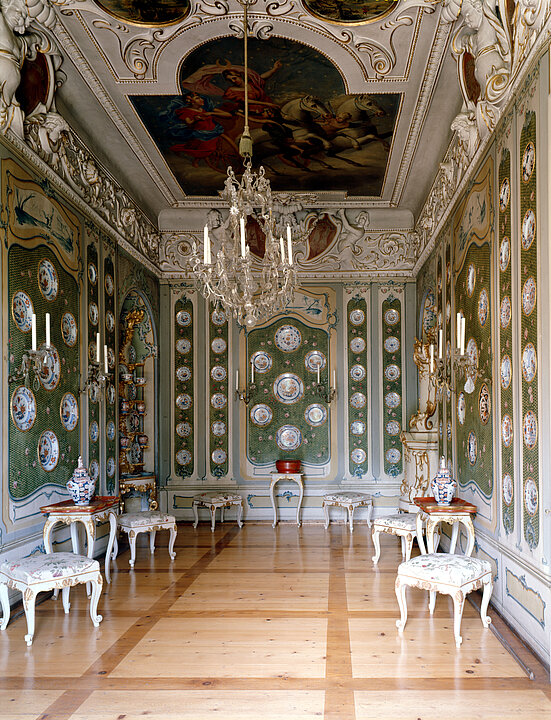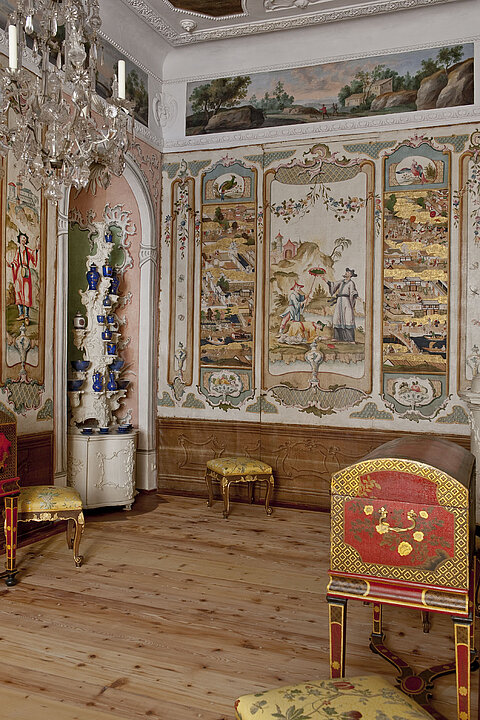The incorporation of chinoiseries reached the height of its popularity in Europe in the 18th century. Indian treasures such as Chinese porcelain, silk screens or Japanese lacquer work were imported from Eastern Asia and presented in the Palaces throughout Europe. And in Eggenberg three rooms were also furnished to house East Asian treasures from the princely collection. The first of these rooms is the Porcelain Room, which has a service of Japanese Imari porcelain embedded into its walls. In addition, plates, lidded jars and small Imari cups are also displayed on etagères and lacquer work tables. The second room to incorporate chinoiseries in its design is a sort of "picture cabinet". In this room, Chinese silk screens were cut to create tiny genre works and framed like miniatures. The decoration on the walls gives the illusion that the miniatures are hanging from blue silk ribbons.
Discover the
Universalmuseum Joanneum
Graz
Styria
Closed

More than 85 animal species from all continents live in the Herberstein Animal World.
Universalmuseum
Joanneum
Back to Universalmuseum Joanneum
Schloss Eggenberg > Discover > State rooms > Interiors > Indian Rooms
Indian Rooms
The three indian rooms



Image Credits
The japanese folding screen
The third Indian room contains a precious Japanese treasure. Once again embedded into European decorations on the walls of the room are eight panels of a Japanese folding screen dating back to the Momoyama period, which was dismantled in 1750. The eight panels were originally part of an interrelated painting of Osaka Castle, which had belonged to Toyotomi Hideyoshi, the unifier of the realm, and already been destroyed back in 1615. It depicts a bustling cityscape of Osaka with views of the formidable Castle of the Toyotomi family as well as the curved bridge leading to the Sumiyoshi Shrine. Brightly coloured scenes show various types of people coming and going in the castle town and tell of how life would have been in a place that was greatly dominated by the court and the duties and pleasures of the samurai noblemen. This extremely rare and valuable piece is not only exceptional for Europe, but also very rarely found in Japan.

Image Credits

















